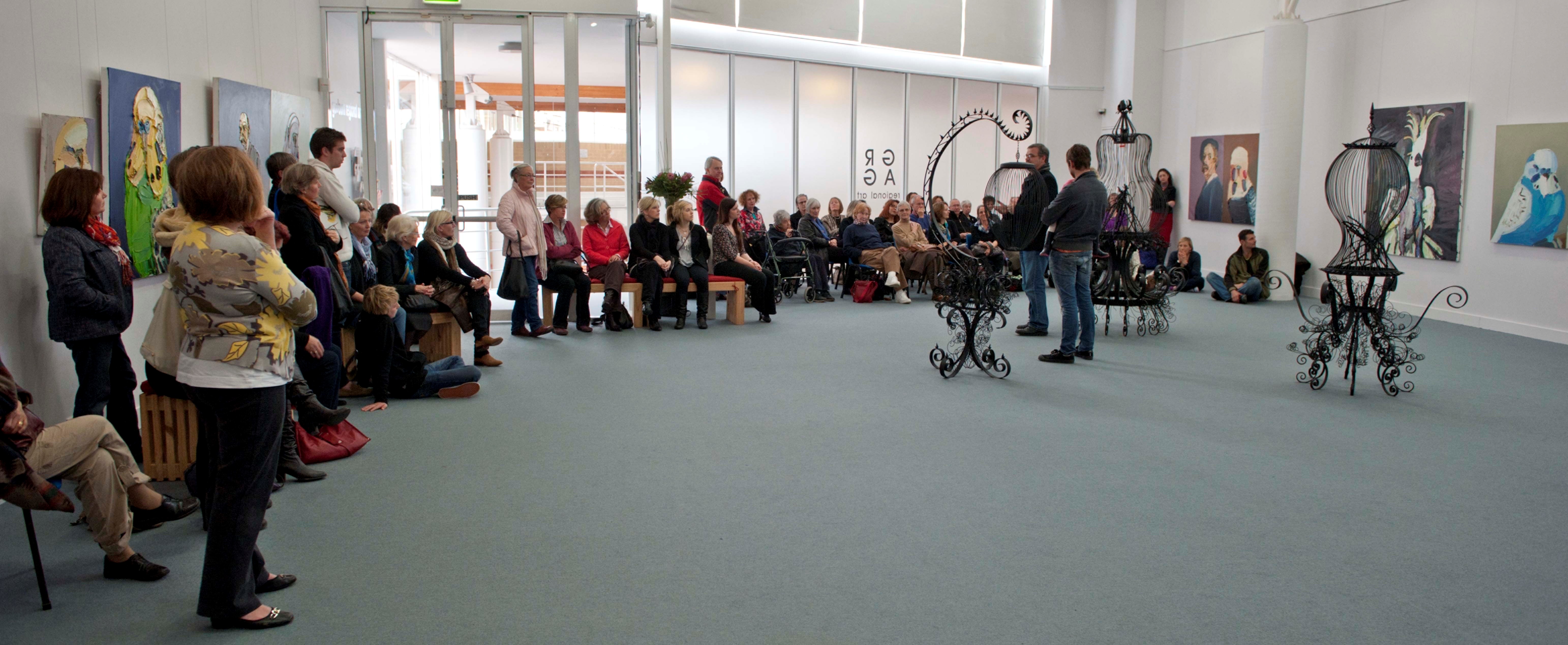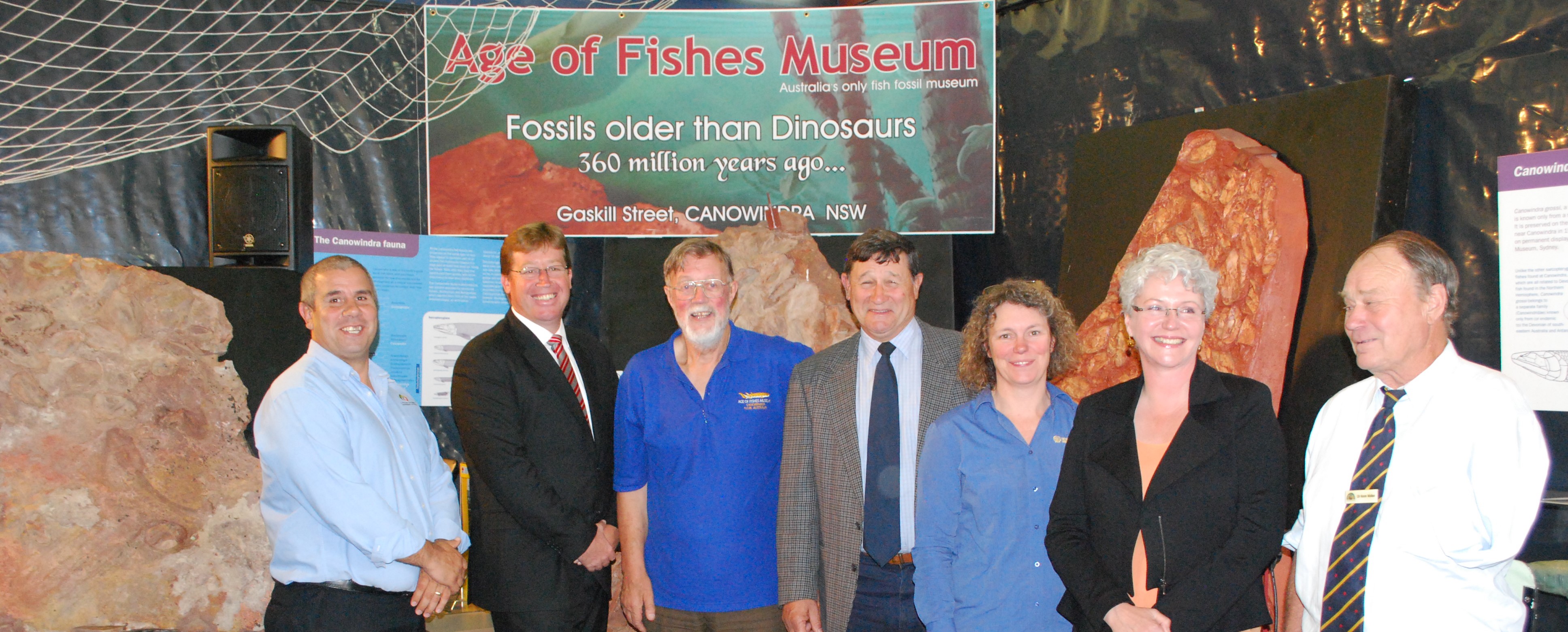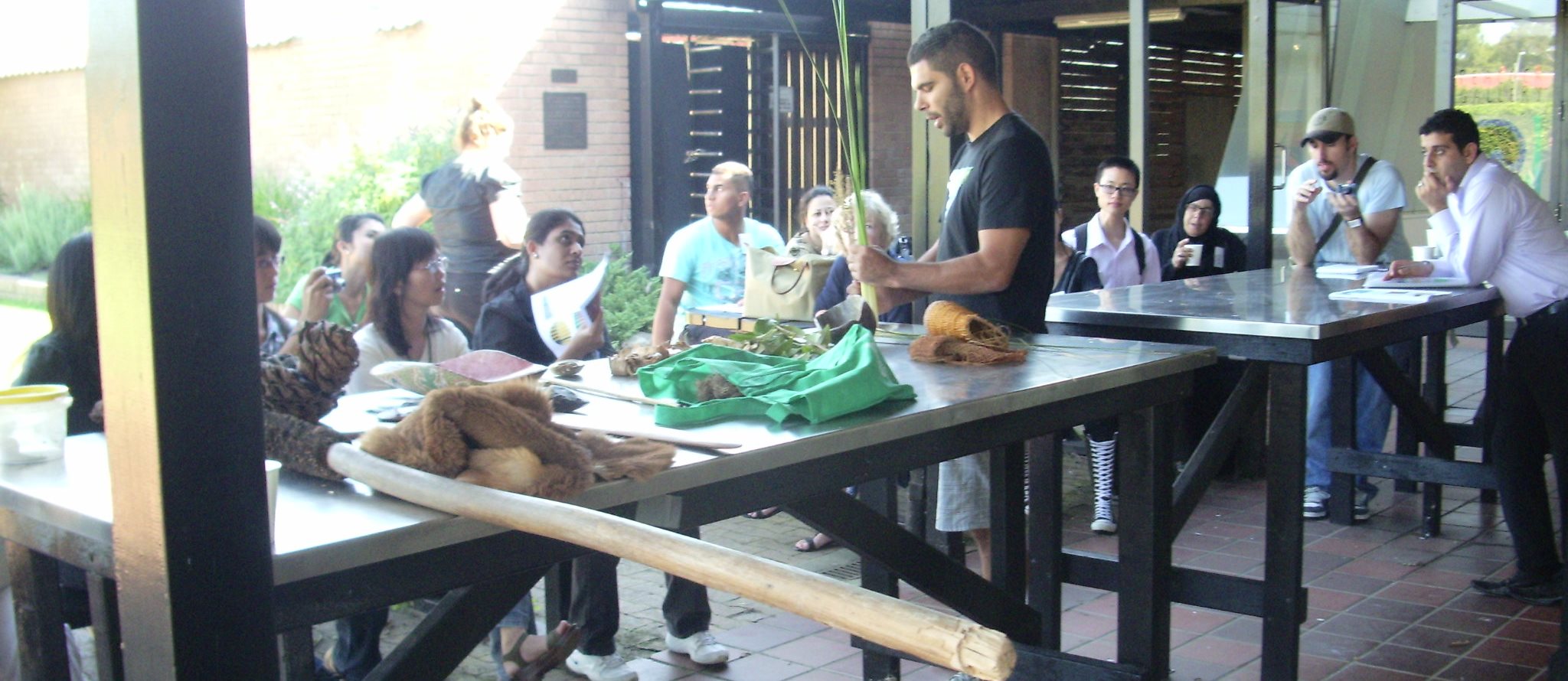Education & Audience Development: 1-4 staff
Here are the 2012 nominees for Education & Audience Development for organisations with 1-4 paid staff.
The winner for this category was Grafton Regional Gallery for their creative drawing project Towards the Stratosphere. Highly commended was awarded to both the Age of Fishes Museum and Auburn City Council’s Peacock Gallery.
Please note that all of these lovely images are courtesy of the nominees.
Goulburn Regional Art Gallery
A Convergence of Birds, a curatorial investigation of Ben Quilty’s work by Andrew Frost

Ben Quilty floor talk GRAG 2011. Courtesy of Goulburn Regional Art Gallery.
‘A Convergence of Birds, a curatorial investigation of Ben Quilty’s work by Andrew Frost’ was exhibited at GRAG. GRAG provided public programs for all audiences and various opportunities to meet the artist including an artist and curator floor talk, masterclasses and studio visit – taking the audience outside the gallery and into the artist’s space.
GRAG provided a student workshop exclusively for Year 11 students in the region to assist with HSC preparation. GRAG received feedback from participating schools that students had provided their class with a talk about their experiece for those who didn’t attend. The program boosted confidence and helped students with devising their major work. GRAG has had requests by teachers to run a similar program on a yearly basis.
Age of Fishes Museum
Acoustiguides

Acoustiguide opening. Courtesy of the Age of Fishes Museum.
The acoustiguides present a hand held professional audio tour of the Age of Fishes Museum’s collection. They tell the story of the discovery and excavation of the 360 million year old Canowindra fish fossils and assist in describing palaeo-environments and geological processes which have created fossils found in the region today. The tour make the facility an interesting and educational regional attraction, aimed at all ages and education levels.
The aim was to increase visitation to the Museum, visitor satisfaction and contribute to the long term viability of the attraction. The project enabled the Museum to offer customers a consistent and reliable tour, available in Adult, Children or electronic form. The information is concise, accurate and timely. It caters for school subjects such as Earth and its Environment.
Peacock Gallery and Auburn Arts Studio
Warrami Art exhibition and public program

Warrami Program - Bush Tucker talk and local History with Derek Walker. Courtesy of Peacock Gallery and Auburn Arts Studio.
The Warrami Art project sought to provide opportunities for the local Aboriginal Community to present the history of the Duck River and its’ significance to the Darug People and provide local communities, schools and new settlers to the area, an opportunity to engage with local Aboriginal culture. It also aimed to increase the connection the community had to the Duck River and improve long term sustainability of the area.
The project included eight Aboriginal artists from Western Sydney (including four artists of Darug heritage). Each artist responded to the themes and the opportunity to share heritage and history of the area. The project involved well known artists including, Adam Hill, Cindy Laws, Jason Wing, Keith Brown, Leanne Tobin and Robyn Caughlan.
Grafton Regional Gallery
Towards the Stratosphere

Curve and elements. Courtesy of Grafton Regional Gallery.
‘Towards the Stratosphere’ was a creative drawing project developed with the six schools in the Grafton Community of Schools. The resulting exhibition consisted of one 25 square metre drawing and dozens of smaller sculptural drawings created by over a hundred local students.
The drawing depicted the layers of our known and unknown environment from deep within the earth progressing up through the ground to the surface upwards into the sky and into outer space. The project provided students with a meaningful exploration of our real and imagined world as well opportunity to produce art work with art professionals and contribute to an exhibition at a regional gallery level.
Museum of Human Disease, UNSW
Brain Awareness Week intertactive experiments

Brain Awareness Week at the Museum of Human Disease. Courtesy of the Museum of Human Disease.
For Brain Awareness Week they created an interactive laboratory in the Museum so people could experiment on their brains. Experiments included balance and reflex testing, virtual microscopey of neurons and brain specimens.
They had two audiences, secondary students and the public. The aim was to encourage the audience to understand the importance of medical research carried out to understand both functioning and damaged brains. It was important that the programs were as engaging as possible which which relied on the interactivity of the experiment stations.
This program provided an innovative way for people to engage with very complex medical science, by engaging people with self experimentationand then interpreting their experience with access to leading researchers and teachers in the field.
